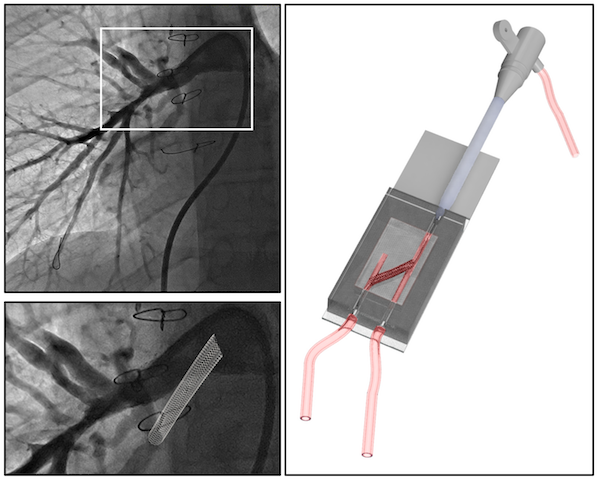Here’s an example of how 3D printing can be applied to pediatric cardiology. It’s also an example of how Georgia Tech, Emory and Children’s Healthcare of Atlanta all work together.
Biomedical engineers used a modified form of gelatin to create a model of pulmonary arteries in newborn and adolescent patients with a complex (and serious) congenital heart defect: tetralogy of Fallot with pulmonary atresia. The model allowed the researchers to simulate surgical catheter-based intervention in vitro.
The results were recently published in Journal of the American Heart Association. Biomedical engineer Vahid Serpooshan and his lab collaborated with Sibley Heart Center pediatric cardiologist Holly Bauser-Heaton; both are part of the Children’s Heart Research and Outcomes Center.
“This is a patient-specific platform, created with state-of-the-art 3D bioprinting technology, allowing us to optimize various interventions,” Serpooshan says.

Model of an adolescent patient’s pulmonary arteries, created by 3D printing. From Tomov et al JAHA (2019) via Creative Commons

